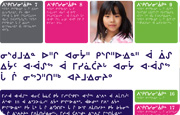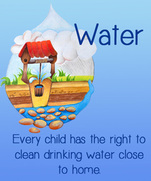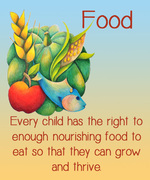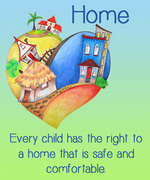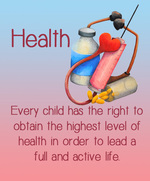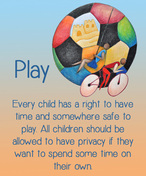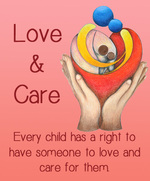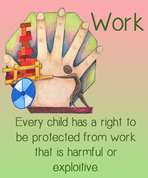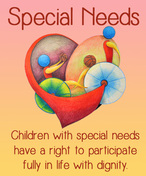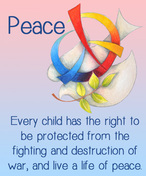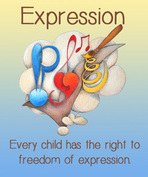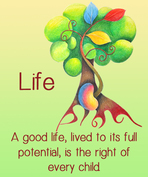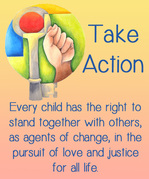Back to: Child Rights
Young children need to learn that they have rights so that they will avoid abuse and be able to self-advocate for themselves and be more respectful to others. Below are a series of materials we have collected from a variety of organizations that may help you to teach them about child rights. This information was created by different organizations and placed here for your consideration and use.
Advocates for Human Rights
K-5 Child Rights Lessons
http://www.theadvocatesforhumanrights.org/k-5.html
In grades K-2, human rights education is focused on understanding the concepts of self, community and responsibility. Teachers can encourage students to develop respect for others by promoting listening and fair treatment. The following lesson plans are designed to introduce human rights topics at a basic level and promote respect for human rights among young students.
In grades 3-5, social responsibility is the central topic in human rights education. Students exploring the concepts of justice and equality by exploring discrimination and other issues they encounter in their own lives. The following lesson plans can be used to introduce human rights topics to students in third through fifth grade.
Lesson Plan: All About Me! Grades K-2
Students will learn about the value of diversity and respect for others.
Lesson Plan: Learning about Human Migration from Butterflies. Grades K-2
Students learn about human migration through a comparison with butterfly migration.
This lesson helps students understand the amount of water they use each day and develop a plan for reducing their water use.
This lesson helps students gain an understanding of how the environment is connected to their daily lives and human rights.
Students will use pictures depicting human rights topics to create original stories and critically analyze how each story connects to different articles in the Universal Declaration of Human Rights.
Lesson Plan: Traveling Suitcases. Grades 3-5
Students will learn about immigration through studying their own family history.
Lesson Plan: Beyond Pink and Blue: The Impact of Gender Stereotypes. Grades 3-7
Students will learn about how gender stereotypes affect them and explore how gender is portrayed in the media.
Lesson Plan: Challenge the Media
A fun group activity that can be done with youth and adults of any age that empowers participants to identify gender stereotypes in the media and examine their effects.
Lesson Plan: Voices of Iraqi Refugees – Making a Connection
From The Voices of Iraqi Refugees Teaching Guide, students will learn to make a connection between themselves and Iraqi refugee children and learn how to welcome refugees into their classrooms and schools.
Amnesty International
The Right Start: Introducing Child Rights to Primary Schoolers – This is a 116 page guide to teaching children in primary school about the UNCRC and their rights..
Rights and Responsibilities Activity – rights_and_responsibilities
Amandla South African singing lesson on HRE
https://www.amnestyusa.org/files/pdfs/amandla_elem_ell_0.pdf
Anti Defamation League
Building a Foundation for Safe and Kind Online Communication – a 34 page guide to help young people be safe online. cyberbullying
Center for Global Education
Children’s Rights in the Early Years Settings – a set of activities
ChildrensRightsintheEarlyYearsSetting
Child Reach International
My School My Voice Project
Children’s Rights Education
Children’s Rights Education Curriculum – Provides 15 units on different UNCRC rights
http://childrensrightseducation.com/curriculum.html
These include the following units:
Provision Rights – Survival
Provision Rights – Development
Protection Rights
Participation Rights
Civics and Citizenship Education
Human Rights – Children’s Rights
This website has a variety of different activities from those who are young to those who are older. The links to the different activities are on the left of this webpage and there are many, so check them out!
http://www.civicsandcitizenship.edu.au/cce/human_rights_childrens_rights_up,9458.html
Gay, Lesbian, and Straight Education Network (GLSEN)
Ready, Set Respect Curriculum – This is a 68 page tool kit to help children learn how to respect each other. GLSEN Ready Set Respect
No Name Calling Week – activities to prevent a variety of types of bullying
http://glsen.org/nonamecallingweek/elementary
These activity resources include:
Blow the Whistle on Name-Calling
Building a Bully-Free Building
Human Rights Campaign
All Children, All Families – emphasis on HRE and LGBTQ+ families
http://www.hrc.org/resources/all-children-all-families-training-curriculum
Open Education Resources
Global Nomads Project, a semester HRE in our community project . It is a very extensive program -you will find the overview link here: https://www.oercommons.org/authoring/5400-global-nomads-group-child-rights-curriculum-semest/view
You can access the Teacher’s manual here: Rights of the Child Educator Handbook
The Student’s manual is here: Rights of the Child Student Workbook
PBS
PBS has provided a handout with activities that promote racial and cultural awareness in the classroom – Activities that Promote Racial and Cultural Awareness
Rights Site News
Everyone Has the Right to be Safe at School is a 12 page guide that is full of activities that will make learning about child and human rights interesting to students, and help to reduce Bullying – rights_sites_bullying_2
Rock Your World
Human Rights Curriculum is a fun-filled way to engage in service learning about HRE. http://www.rock-your-world.org/curriculum
Some their activities include:
Teaching Tolerance
Under Child Rights Curriculum, you will find a link to their many helpful and inspirational resources for teaching HRE issues to students of all ages.
Make sure to check out the films in our HRE Child rights film tab!
A Study of Gender in Elementary Schools – this is the review of a study on this topic that educators will find useful – Gender and HRE survey
UNICEF
UNICEF is the leader in child rights. Their websites contain a variety of educational curriculum. Cruise around their websites to introduce yourself to the many ed options they provide.
Here is a link for their Kid Power set of educational resources for younger age students https://schools.unicefkidpower.org/
Here are a set of resources for teaching primary school students about their rights https://www.unicef.ca/en/elementary-resources
UNICEF Elementary Resources
These classroom-ready lesson plans for the elementary classroom were developed to help achieve curriculum aims.
Please view PDF files before printing. You may wish to copy and print certain lesson plans rather than the entire files, since some files exceed 50 pages.
Global Citizenship Calendar

When Disaster Strikes Elementary
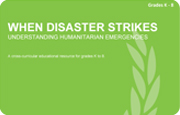
Classroom Activities for Children’s Rights
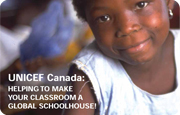
Rights, Wants and Needs Activity Kit
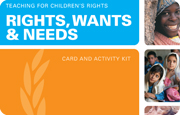
The Heaven Shop Teacher’s Guide
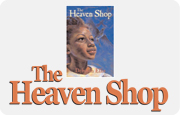
Bringing Children’s Rights Alive
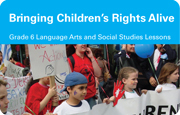
Children of the World
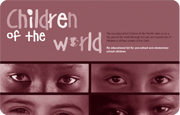
Convention on the Rights of the Child
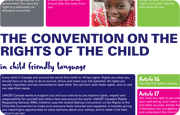
Read the Convention in Other Languages
